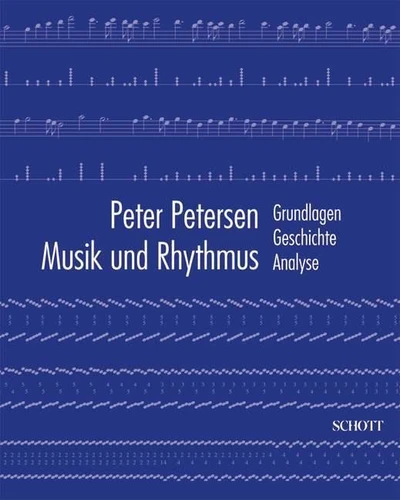Musik und Rhythmus. Grundlagen - Geschichte - Analyse
Par :Formats :
Actuellement indisponible
Cet article est actuellement indisponible, il ne peut pas être commandé sur notre site pour le moment. Nous vous invitons à vous inscrire à l'alerte disponibilité, vous recevrez un e-mail dès que cet ouvrage sera à nouveau disponible.
- Nombre de pages304
- PrésentationBroché
- Poids0.951 kg
- Dimensions24,0 cm × 30,0 cm × 0,0 cm
- ISBN978-3-7957-0728-6
- EAN9783795707286
- Date de parution01/01/2011
- CollectionLIVRE SUR LA MU
- ÉditeurSCHOTT
Résumé
For the first time since Hugo Riemann, a book is presented that is based on a completely new rhythm theory : the 'theory of components'. Petersen's theses and analyses make it possible to describe and understand the rhythmic structure of music better than before. Whereas rhythm has been described simply as an interplay of longs and shorts with accents and metres up to now, Petersen shows that there are secondary rhythms apart from the basic rhythms which are not notated because they depend on tonal properties and tonal figures.
These 'rhythms of components' are effective as a rhythmic fabric and at the same time gravity forming ; they can even change metre and time.
These 'rhythms of components' are effective as a rhythmic fabric and at the same time gravity forming ; they can even change metre and time.
For the first time since Hugo Riemann, a book is presented that is based on a completely new rhythm theory : the 'theory of components'. Petersen's theses and analyses make it possible to describe and understand the rhythmic structure of music better than before. Whereas rhythm has been described simply as an interplay of longs and shorts with accents and metres up to now, Petersen shows that there are secondary rhythms apart from the basic rhythms which are not notated because they depend on tonal properties and tonal figures.
These 'rhythms of components' are effective as a rhythmic fabric and at the same time gravity forming ; they can even change metre and time.
These 'rhythms of components' are effective as a rhythmic fabric and at the same time gravity forming ; they can even change metre and time.



